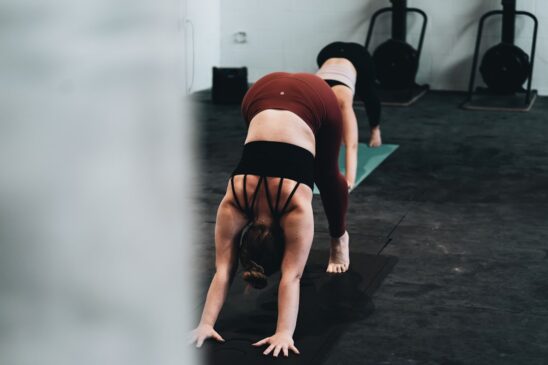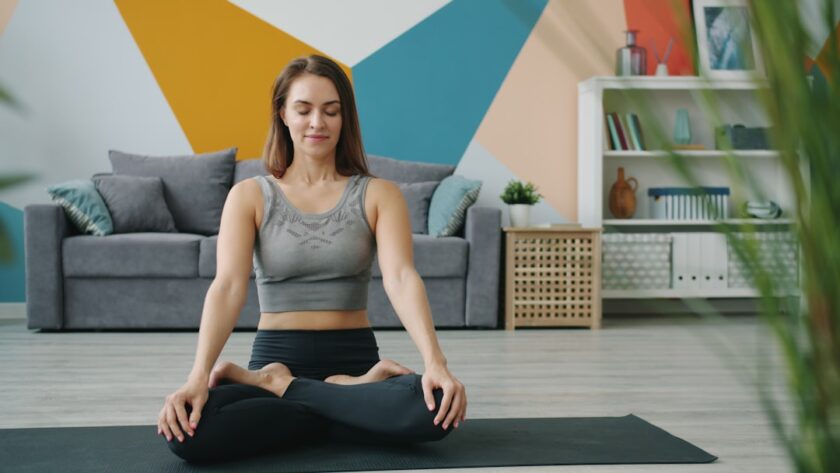Introduction to Yoga
Yoga is a holistic practice that encompasses physical postures, breathing techniques, and meditation. It promotes the union of mind, body, and spirit. For beginners, starting yoga can feel overwhelming, but with the right guidance, you can embark on a fulfilling journey.
Why Practice Yoga?
Yoga offers numerous benefits for both physical and mental well-being. Here are some key advantages:
- Improved Flexibility: Regular practice can enhance your flexibility over time.
- Increased Strength: Many poses build muscle strength, especially in the core, arms, and legs.
- Stress Reduction: Yoga promotes relaxation and mindfulness, reducing stress levels.
- Better Posture: Alignment and balance in yoga help correct poor posture.
- Enhanced Mental Clarity: Meditation and breathing techniques aid concentration.
Getting Started with Yoga
As a beginner, it’s essential to have a clear plan to start your yoga practice. Here are some steps to help you begin:
1. Choose the Right Yoga Style
There are various styles of yoga, each focusing on different aspects. Some beginner-friendly styles include:
- Hatha Yoga: A gentle introduction to yoga that focuses on basic poses and breathing.
- Vinyasa Yoga: A flow-based style that connects breath with movement, ideal for those who enjoy a dynamic practice.
- Yin Yoga: A slow-paced style with poses held for longer periods, promoting deep relaxation.
2. Gather Your Equipment
You don’t need much to start practicing yoga, but here are some essentials:
- Yoga Mat: A sturdy mat provides cushioning and grip.
- Comfortable Clothing: Wear breathable, stretchy clothes that allow free movement.
- Yoga Blocks: These can provide support and make poses more accessible.
- Strap: Useful for helping you reach deeper into stretches.
3. Find a Beginner Class or Online Resource
Consider enrolling in a local yoga class or exploring online resources. Look for classes labeled as “beginner” or “introductory.” Online platforms like YouTube or yoga apps are great alternatives for practicing at home.
Essential Yoga Poses for Beginners
Here are some fundamental yoga poses you can comfortably try as a beginner:
1. Mountain Pose (Tadasana)
This foundational pose helps improve posture and balance.
How to Do It:
- Stand tall with your feet together.
- Engage your core and reach your arms overhead.
- Hold for 5 breaths.
2. Downward Facing Dog (Adho Mukha Svanasana)
A great stretch for the entire body, focusing on the hamstrings and shoulders.
How to Do It:
- Start on all fours, tuck your toes, and lift your hips upwards.
- Relax your head between your arms.
- Hold for 5 breaths.
3. Child’s Pose (Balasana)
A restful pose that stretches the back and promotes relaxation.
How to Do It:
- From all fours, sit back on your heels.
- Stretch your arms forward and relax your forehead on the mat.
- Hold for 5 breaths.
4. Warrior I (Virabhadrasana I)
This pose builds strength and confidence.
How to Do It:
- Step one foot back, bend your front knee, and raise your arms overhead.
- Turn your head to look at your extended arms.
- Hold for 5 breaths, then switch sides.
Tips for Your Yoga Practice
To maximize your yoga experience, keep these tips in mind:
- Listen to Your Body: Pay attention to how your body feels and adjust poses as needed.
- Practice Regularly: Consistency is key; aim for a few short sessions each week.
- Create a Calm Environment: Practice in a quiet space, free from distractions.
- Set Realistic Goals: Progress in yoga takes time. Focus on enjoying the journey.
- Know the Importance of Breath: Incorporate pranayama (breathing exercises) into your practice.
Common Mistakes to Avoid
As a beginner, it’s easy to make some common mistakes. Here’s how to avoid them:
- Pushing Too Hard: Avoid forcing your body into poses beyond your limitations.
- Neglecting Alignment: Focus on proper alignment to prevent injuries.
- Comparing Yourself to Others: Every yoga journey is unique; embrace your path.
The Importance of Mindfulness in Yoga
Yoga isn’t just about physical postures; mindfulness plays a crucial role. As you practice, focus on your breath, your body, and your thoughts. This practice of presence helps cultivate a deeper connection to oneself.
Conclusion
Starting your yoga journey as a beginner means taking the first step towards better physical and mental health. With this guide, you now have the knowledge and tools to embark on your yoga practice confidently. Remember, the journey of yoga is personal and ever-evolving—enjoy each moment!



